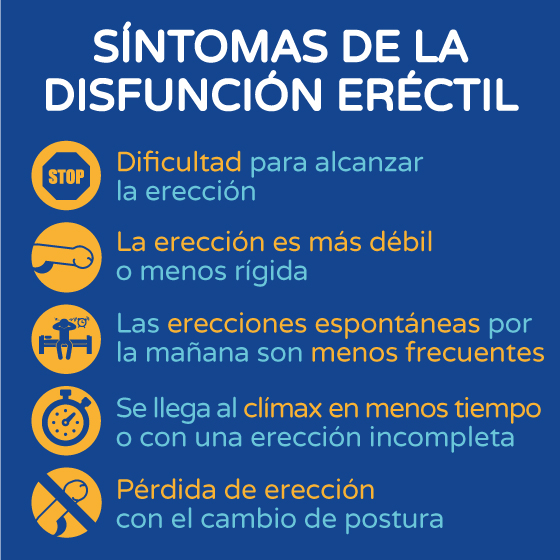Book Appointment Now
Disfunción Eréctil: Síntomas Y Diagnóstico Completo

[Disfunción Eréctil: Síntomas Y Diagnóstico Completo]

Executive Summary

This comprehensive guide explores erectile dysfunction (ED), providing a detailed understanding of its symptoms, causes, and available diagnostic methods. We will delve into the various factors contributing to ED, ranging from physical health conditions to psychological factors and lifestyle choices. Understanding these aspects is crucial for effective diagnosis and the selection of appropriate treatment strategies. We’ll cover key diagnostic tests, emphasizing the importance of seeking professional medical help for accurate assessment and personalized management of ED. This guide aims to empower readers with the knowledge necessary to navigate this sensitive health issue with confidence and seek timely intervention.

Introduction
Erectile dysfunction (ED), also known as impotence, is a common condition affecting millions of men worldwide. It’s characterized by the inability to achieve or maintain an erection firm enough for satisfactory sexual intercourse. While often associated with aging, ED can occur at any age and is frequently linked to underlying medical conditions, lifestyle factors, or psychological issues. This article provides a thorough overview of ED, focusing on its symptoms, diagnostic procedures, and the importance of seeking prompt medical attention. Understanding the multifaceted nature of ED is crucial for effective management and improving overall sexual health.
Frequently Asked Questions (FAQs)
- Q: Is erectile dysfunction a sign of a serious health problem?
A: While ED can be a symptom of underlying health issues like heart disease, diabetes, or hormonal imbalances, it’s not always indicative of a severe problem. Many factors can contribute to ED, and a thorough medical evaluation is necessary to determine the underlying cause.
- Q: Can psychological factors cause erectile dysfunction?
A: Absolutely. Stress, anxiety, depression, and relationship problems can significantly impact sexual function, leading to ED. Addressing these psychological factors is often a crucial part of treatment.
- Q: What are the common treatment options for erectile dysfunction?
A: Treatment options vary depending on the underlying cause and may include lifestyle changes, medication (such as PDE5 inhibitors), hormone therapy, penile implants, vacuum erection devices, or psychological counseling.
Síntomas de la Disfunción Eréctil
ED manifests differently in individuals, but common symptoms include:
- Difficulty achieving an erection: This is the most prominent symptom, characterized by inconsistent or unsuccessful attempts to achieve an erection sufficient for intercourse.
- Difficulty maintaining an erection: Even if an erection is achieved, it may not be sustained long enough for satisfactory sexual activity.
- Reduced sexual desire: While not directly ED, decreased libido often accompanies ED and can be related to underlying medical or psychological issues.
- Inability to achieve orgasm: While not always present, some men with ED experience difficulty reaching orgasm.
- Decreased penile firmness: The erection may feel less firm or rigid than usual, making intercourse difficult or uncomfortable.
- Changes in ejaculation: Some men experience changes in ejaculatory function, such as reduced volume or delayed ejaculation.
Causas de la Disfunción Eréctil
Understanding the underlying causes of ED is pivotal for effective treatment. Several factors can contribute:
- Vascular disease: Conditions affecting blood flow to the penis, such as atherosclerosis (hardening of the arteries), are major contributors to ED.
- Neurological disorders: Damage to nerves controlling penile erection, often stemming from conditions like diabetes or multiple sclerosis, can impair sexual function.
- Hormonal imbalances: Low testosterone levels or other hormonal irregularities can significantly affect libido and erectile function.
- Psychological factors: Stress, anxiety, depression, performance anxiety, and relationship issues can all lead to ED.
- Lifestyle factors: Smoking, excessive alcohol consumption, obesity, and lack of physical activity negatively impact cardiovascular health, increasing the risk of ED.
- Medications: Certain medications, including some antidepressants, antihypertensives, and tranquilizers, can have ED as a side effect.
Diagnóstico de la Disfunción Eréctil
Accurate diagnosis is crucial for selecting the most appropriate treatment. Medical professionals typically employ several methods:
- Medical history and physical examination: A thorough review of medical history, including medications, lifestyle factors, and any existing health conditions, is crucial. A physical exam assesses overall health and helps identify potential contributing factors.
- Blood tests: These tests measure hormone levels (such as testosterone), blood sugar, and cholesterol levels to identify potential underlying medical issues.
- Nocturnal penile tumescence (NPT) testing: This test measures nighttime erections, which often occur spontaneously during sleep. Reduced or absent NPT suggests a possible neurological or vascular cause.
- Doppler ultrasound: This imaging technique assesses blood flow in the penis, helping to identify vascular problems.
- Penile injection testing: In this test, medications are injected directly into the penis to determine its ability to achieve an erection. This can help differentiate between vascular, neurological, or psychological causes.
- Urodynamic studies: These sophisticated tests are less commonly used, but can be helpful to evaluate the function of the nerves and muscles involved in urination and penile erection.
Tratamiento de la Disfunción Eréctil
Treatment options vary depending on the identified cause and individual needs. The focus is often on addressing the underlying issue while improving erectile function:
- Lifestyle modifications: Quitting smoking, managing weight, increasing physical activity, and reducing alcohol consumption can significantly improve ED in many men.
- Medications: Oral medications like PDE5 inhibitors (e.g., sildenafil, tadalafil) are frequently used to improve blood flow to the penis and facilitate erections. Other medications may be prescribed to address underlying conditions like hormonal imbalances.
- Hormone replacement therapy: For men with low testosterone levels, hormone replacement therapy can help restore hormonal balance and improve sexual function.
- Vacuum erection devices: These devices help create an erection by drawing blood into the penis.
- Penile implants: Surgical implantation of penile prostheses is a last resort option for men who haven’t responded to other treatments.
- Psychological counseling: Therapy can be highly beneficial for men experiencing ED due to anxiety, stress, performance anxiety, or relationship issues.
Conclusión
Erectile dysfunction is a multifaceted condition with a wide range of contributing factors, from physical health problems to psychological issues and lifestyle choices. Open communication with a healthcare professional is crucial for accurate diagnosis and effective treatment. A thorough evaluation, including medical history, physical examination, and potentially specialized tests, is essential to determine the underlying cause. Remember, ED is treatable, and with the right approach, many men can regain their sexual function and confidence. Don’t hesitate to seek help – your sexual health is an important aspect of overall well-being. Timely intervention improves the likelihood of successful management and can help maintain a fulfilling and satisfying sex life. The information provided here is intended for educational purposes only and should not be substituted for professional medical advice.
Keyword Tags
Erectile Dysfunction, ED Symptoms, ED Diagnosis, ED Treatment, Sexual Health


